I'm building a heightmap out of a 2D array of shorts. The code to generate the vertices is
MeshVertex v; // has position, normal, and texCoord fields
v.position = glm::vec3(
(float) x * 150,
height * 64,
(float) z * 150
);
When I generate the indices for the terrain mesh, I followed the tutorial on learnopengl.com, where I loop through each row, loop through each column, and assign the two sets of indices for the two triangles in each cell.
for(unsigned int i = 0; i < mapSize-1; i++) // for each row a.k.a. each strip
{
for(unsigned int j = 0; j < mapSize; j++) // for each column
{
for(unsigned int k = 0; k < 2; k++) // for each side of the strip
{
indices.push_back(j + mapSize * (i + k));
}
}
}
Lastly, I thought GL_TRIANGLE_STRIP draws the tris in a counter clockwise direction, based on indices 0, 1, 2; 2, 1, 3 as per wikipedia. Assuming 0-based numbering, wouldn't this mean that vertices 1 and 4 share a texture coordinate and vertices 2 and 3 share a texture coordinate? I'm building my texture coords based on this with the following code
switch(index % 6) {
case 0:
v.texCoords = glm::vec2(0, (bandHeight * 1) + bandHeight);
break;
case 1:
case 4:
v.texCoords = glm::vec2(0, (bandHeight * 1));
break;
case 2:
case 3:
v.texCoords = glm::vec2(1, (bandHeight * 1));
break;
case 5:
v.texCoords = glm::vec2(1, (bandHeight * 1) + bandHeight);
break;
}
I don't know that it's relevant, but the bandHeight variable is due to my textures being a variable length vertical image of subimages, where the first texture is row 0, second texture is row 1, etc. That's all that is, with 1 meaning we're looking at the second texture, which I've hardcoded just for testing.
When I render the terrain mesh, only one quad in every 6 looks right. The rest are warped, and I'm not sure why. What is the right formula for generating texture coordinates based on which index the loop is processing?
Here's what a full picture of the terrain looks like, with each cell having the texture coordinates generated with the current cell's intended texture.
Edit
As there have been some votes to close the question as "not enough code to reproduce", here's a link to the full repository. You'll need your own copy of HUNTDAT from Carnivores2; I can't provide that due to copyright reasons. It can easily be found through some google searches, though.
It compiles on Windows 10 with MinGW 8, although the cmakelists file should be easy enough to customize to other platforms.
The file that generates the terrain is found here.

